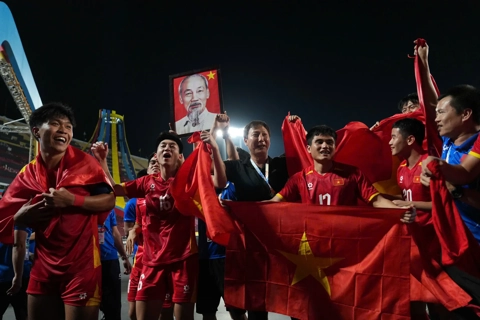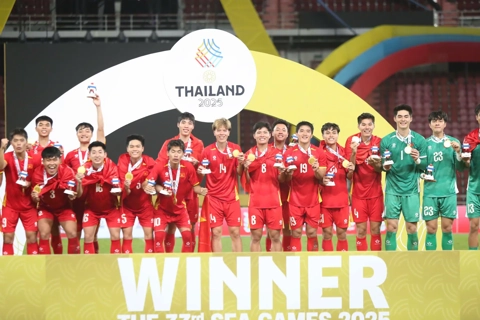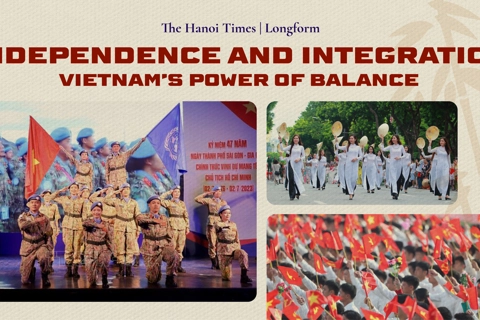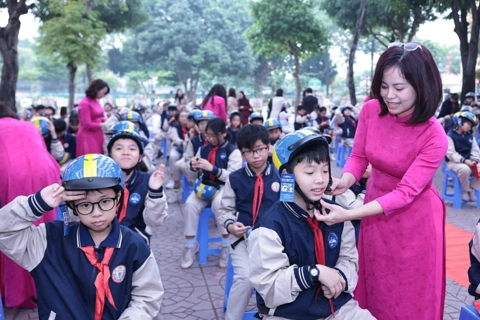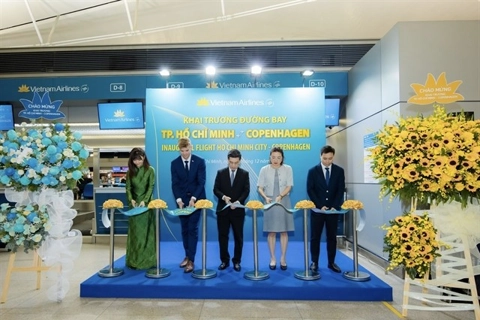Vietnam
Chinese vessels repel VN boats
May 30, 2014 / 08:51 AM
China yesterday continued to maintain a fleet of 122 ships around the oil rig Haiyang Shiyou-981 that it has placed in Viet Nam`s waters, according to the Viet Nam Fisheries Surveillance Department.
The department reported that together with four warships, 41 coast guard vessels, 16 tugs, 14 cargo ships and 47 fishing vessels, China also sent a reconnaissance plane to fly above the rig.

Chinese ships formed in groups of at least seven to hinder Viet Nam Fisheries Surveillance ships, keeping them 10 nautical miles away from the rig.
The Vietnamese ship KN-630 was fired at with water cannons by a Chinese coast guard vessel, seriously damaging its equipment.
In addition, a group of up to 45 Chinese fishing vessels kept on disturbing Vietnamese fishing boats operating in Viet Nam's waters about 30 nautical miles from the oil rig, the department reported.
China kept a group of four ships on standby to chase, ram and fire water cannons at Vietnamese vessels.
Chinese fishing vessels followed and even used fishing nets to disturb Viet Nam Fisheries Surveillance ships, the department added.
It said that on Tuesday afternoon, the DNa-90152 fishing boat sunk by a Chinese ship on May 26 was towed to shore for repairs on Ly Son Island.
At the beginning of May 2014, China illegally dispatched the rig, as well as a large fleet of armed vessels, military ships and aircraft, to Viet Nam's waters and positioned the rig at 15 degrees 29 minutes 58 seconds north latitude and 111 degrees 12 minutes 06 seconds east longitude.
The location is 80 miles inside Viet Nam's continental shelf and exclusive economic zone.
Armed Chinese vessels aggressively fired high-power water cannons at and rammed against Vietnamese public-service and civil ships, injuring many on board and damaging many boats.
Chinese ships have continuously encircled, constrained and driven away Vietnamese fishing boats and even injured Vietnamese fishermen, threatening their lives.
Yesterday, 10 fishermen who were onboard aboat hit by a Chinese vessel on May 26 were safely brought to Ly Son Island.
On May 27, China moved the rig to 25 nautical miles from Tri Ton Island in Viet Nam's Hoang Sa archipelago and 23 nautical miles east-northeast from the old location. However, it is still completely within Viet Nam's continental shelf.
In a phone conversation yesterday, Deputy Prime Minister and Foreign Minister Pham Binh Minh and the European Union's top representative for foreign relations and security, Catherine Ashton, exchanged views on the situation.
Ashton said she was especially concerned about China's recent acts, saying they could affect regional security.
She proposed that a peaceful and cooperative solution be sought in line with international law, especially the 1982 UN Convention on the Law of the Sea (UNCLOS) so as to ensure security and freedom of navigation.
The EU called on both parties to apply measures to ease tension and take no unilateral acts that negatively impacted peace and stability.
‘A disputed area'
The Vietnamese Ambassador to the United States, Nguyen Quoc Cuong, told CNN's Christiane Amanpour in an interview earlier this week that China was trying to turn an undisputed area into a disputed area.
The diplomat said China's deployment of an oil rig and many escort ships in Viet Nam's waters was a serious violation of Viet Nam's sovereignty and sovereign rights.
He said it also infringed international law, especially the 1982 United Nations Convention on the Law of the Sea, and the Declaration on the Conduct of Parties in the East Sea agreed by Chinese leaders and ASEAN in 2002.
Refuting a statement by the Chinese Ambassador to the US, Cui Tiankai, that China only had one rig in the waters while Viet Nam had 30, Cuong said Viet Nam had been carrying out oil and gas exploration and exploitation on its continental shelf and exclusive economic zone (EEZ) for decades.
He said many foreign companies had worked with the country in the field. "They would not do that if the waters were in a disputed area," he added.
No acceptances
The Vietnamese Ambassador pointed out that in 2012, China announced it would accept international bids for oil and gas lots on Viet Nam's continental shelf, but no one accepted the invitation.
Amanpour said China was flexing its muscle in territorial disputes with its smaller neighbors, from Japan to the Philippines and Viet Nam.
She said the attitude was well summed up well by China's then-foreign minister, Yang Jiechi, who in 2010 told his Singaporean counterpart that China was a big country and that other countries were small.
In response, Ambassador Cuong said such an argument was unjustifiable, adding that in foreign relations and international law, every country was on an equal footing.
He reiterated that Viet Nam was following an independent foreign policy and wanted good relations with China as well as with the United States and other countries. He said it would not accept coercion or threats.
US President Barack Obama said his country was supporting Southeast Asian nations as they negotiated a code of conduct with China on maritime disputes in the South China Sea (which Viet Nam calls the East Sea).
"We are working to resolve these disputes through international law," Obama said in a speech at the West Point military academy on May 28.
The US President also said aggression that went unchecked, whether in southern Ukraine or the East Sea, or anywhere else in the world, could eventually draw in the US military, adding that the US could not ignore what happened beyond its boundaries.

